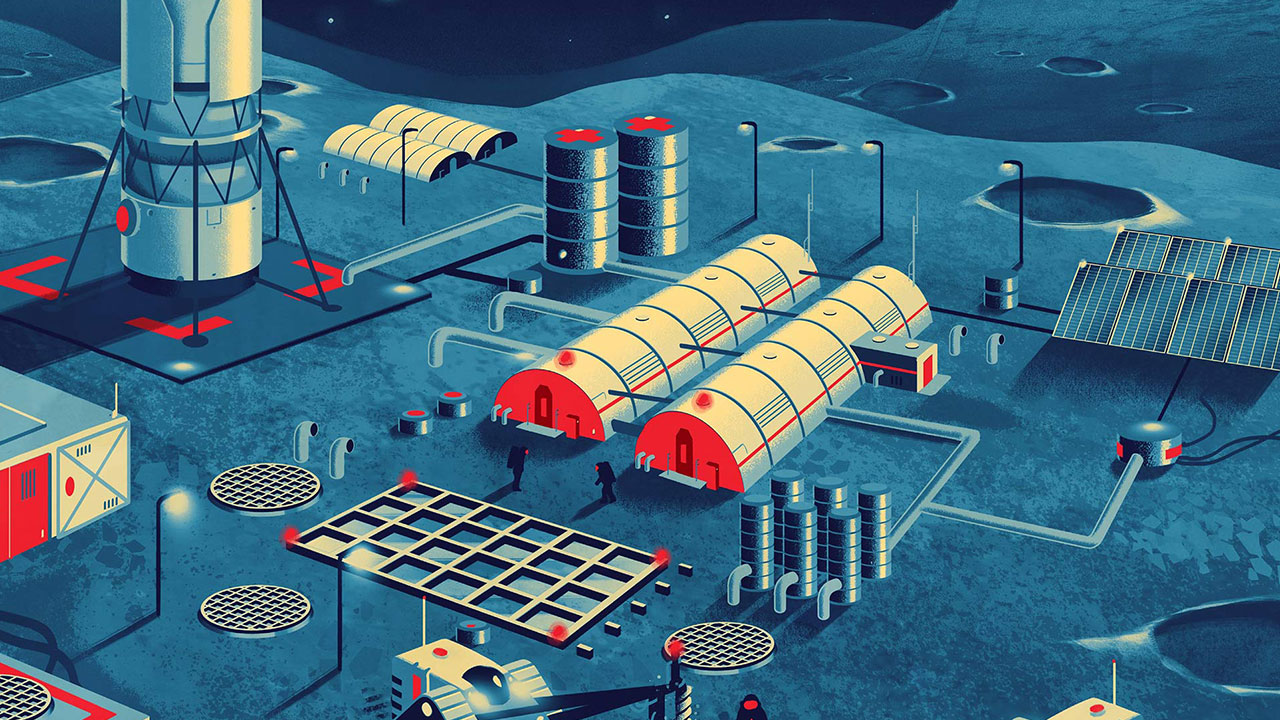The idea is enjoying more attention than ever—but there are major challenges to overcome
The idea of collecting solar energy in space and beaming that power to Earth is not new. In 1941, Isaac Asimov published a short sci-fi story called Reason, in which humans do just that. Over the decades that followed, scientists and engineers have revisited the concept periodically. But what is new is that space-based solar power may now be technically and economically feasible.
That’s what a European Space Agency (ESA) engineer named Sanjay Vijendran realized when he started assessing the concept in 2020. A new generation of reusable rockets had begun to address the need to get lots of solar panels into space for a reasonable cost. And, at the same time, private companies were bringing down the cost of satellite production.
“It seemed to us that many things were coming together to make the business case close,” says Vijendran.
The timing was opportune in other ways. Europe was seeking alternative energy sources to break its dependence on other countries for natural gas and other fossil fuels, and public surveys were expressing desire that space agencies prioritize projects that help address problems here on Earth. Developing a space-based solar array to provide a renewable, carbon-neutral source of energy hit the sweet spot of giving the European Space Agency a grand ambition that met the continent’s growing concern about climate change.

The space agency’s council approved the creation of the SOLARIS initiative in November 2022, and tapped Vijendran to lead it. Its first task is to carry out a full analysis to determine whether Europe should start investing billions of euros into the technology. If it moves ahead, this will likely happen during the second half of this decade.
The ESA is not an outlier in wishing to explore space-based solar power. In the UK, a government-endorsed initiative is bringing together more than 75 organizations around the idea, and, in 2023, the government injected GBP4.3 million into eight projects aiming to develop relevant technologies. In the US, the government has awarded a USD100 million contract to the private sector to launch a prototype this decade. And in China, work is reportedly underway to launch a trial solar array in 2028. By one recent estimate, the global space-based solar power market could be worth USD3.4 billion by the end of 2031.
In theory, space-based solar power is straightforward. Satellites orbiting far above Earth's atmosphere collect solar energy and convert it into current, and this energy is then beamed back to Earth—many projects are looking at doing this via microwaves. That energy would then be captured by large antennas, converted back into electricity, and sent to the grid for residential or industrial use.
“This would offer a range of advantages over terrestrial solar power,” says Vijendran. “That’s especially true in Europe. Days are shorter. There is often cloud cover. Solar irradiance during the winter can be very low.” In space, none of these are issues. Space-based solar panels can capture high-intensity, uninterrupted solar radiation at scale, meaning it could become a “baseload” source of energy, providing power constantly to meet day-round demand, much like nuclear power now.
However, the challenges of this approach are myriad. First of all, such an array of solar energy collectors would need to be huge. One concept being considered by the ESA is a constellation of dozens of very large satellites located in geostationary orbit, 36,000 km above Earth. Each of these satellites would be ten times more massive than the International Space Station, which took more than a decade to assemble in low Earth orbit.
Then there are the technological challenges, such as wireless power transmission. This has been demonstrated on Earth, with kilowatts of energy sent over a matter of a few kilometers. But for space-based solar power, this transmission would need to occur over tens of thousands of kilometers, with gigawatts of energy. The receiving antennas would need to be huge, measuring hundreds of meters to kilometers in scale.
“That's just so far removed from anything anybody has done on Earth or in space, so we're bound to find problems along the way,” says Vijendran. “But it's not like somebody's tried it and failed. So we just need to get on with working on expanding the transmission power and the size of the antennas, and solving the problems that will come with being able to coordinate all of these elements in a controlled way to form a beam, and send energy safely and accurately across large distances.”
Beyond the technological challenges, there is also the issue of cost. It is far, far cheaper to just set some solar panels out in your backyard and plug them into the electricity grid on Earth than it is to launch them into space, beam the power across great distances, and convert it into usable electricity.
Vijendran says that this is not comparing apples with apples, since the nature of the electricity provided is not the same. Space-based solar power would be reliable; Earth-based solar is unreliable. But in practice he sees the two working together. “Having a space-based source of baseload power will help accelerate the roll-out of terrestrial solar and wind, reducing the need for large-scale storage solutions,” he says. “So it helps resolve major challenges the current industry faces to transition to a fully clean energy system.”
In other words, Asimov’s short story may yet prove to be prescient.

Why ‘living off the land’ will be crucial to the dawning era of space exploration
As humanity ventures further into the solar system, harvesting resources in space for use off-world will be essential

Satellites can now show businesses what the human eye can’t see
Dark? Cloudy? Snowy? ‘Synthetic aperture radar’ satellites can peer through it all, and this new sector is booming

How celestial ‘gas stations’ could unlock the space economy
Orbiting propellant depots are in development, and they could reinvent how we operate beyond Earth

Space junk is a huge problem. It’s also a business opportunity
The more we do up there, the more we have to clean up after ourselves. But how?

